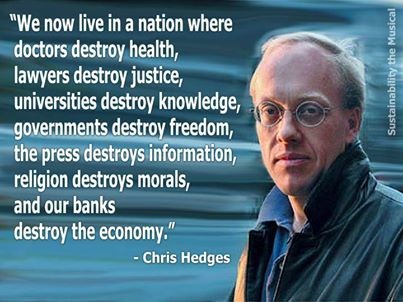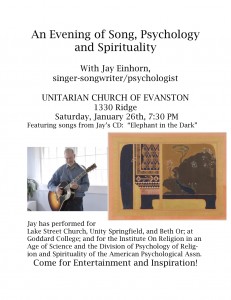This story was originally published in the online webzine “Covalence,” Dec. 2012-Jan. 2013, and is available on the Covalence Archive at http://luthscitech.org/the-googlers-religion-of-the-future/. It is modeled on the story of “The Islanders,” chapter 1 in “The Sufis,” by Idries Shah..
Once upon a time there was a civilization where everyone used computers and the internet to manage everything that made society function and life efficient, comfortable, and secure. With computers and the internet, they controlled the generation of electricity and the management of traffic, delved within the body and reached into outer space, created entertainment in music and cinema and transmitted it around the world instantly. With computers and the internet, they managed unprecedentedly huge and complex international commercial and financial networks, and even the military defense of nations. Virtually all their communications, all the management and coordination of all their systems, their entire industrial, educational, economic, military, health care and governmental infrastructures, were computerized. The citizens of that civilization lived in a world in which everyone was connected to everyone else, by computers through the internet. And it all worked very well indeed.
The internet was invisible but it was everywhere. Connected with the internet, people could find out the answer to almost any question they wanted to ask. Whole libraries, encyclopedias, dictionaries, storehouses of magazines and journals, all manner of information and research, information which people had dedicated their entire lifetimes to discovering just an infinitesimal portion of, were just a few clicks away from almost anyone, almost anywhere, who was at a computer. The method of searching the internet through a computer was called “Googling,” and everyone in those ancient days did it.
Today we look back upon it as a golden age.
The end of the golden age evolved, gradually and invisibly, so that no one noticed until it burst upon them. Nations practiced invisible “cyberwar,” placing powerful but dormant “logic bombs” within one another’s master computer control grids, which, if activated, were capable of disrupting virtually every aspect of every country. Unlike conventional war, however, cyberwar attack could not be seen coming. Indeed, cyberwar attacks could not even be identified as coming from a particular place. They would happen instantly, without any advance notice, wrecking computer networks and wreaking devastation and havoc within minutes. Every advanced nation had its cyberwarriors and cyberwar strategy, and each one placed logic bombs within the grids of the others, in order to counterattack if the day came when it might be the target of a cyberattack. One day a cyberattack started–no one knows from where, it could have been a cyberwarrior in North Korea or a kid in Kalamazoo or Novosibirsk–targeting the military, government and industrial systems in the all the mightiest nations simultaneously. That instantly triggered their own cyberwar counterattacks, and within minutes every nation on the grid was attacking the computers of every other one. Within a very short time, virtually all the systems responsible for managing and maintaining communications, transportation, power generation and distribution, all the technological structures of civilization, were burned to a crisp. Electricity stopped flowing, and computers, the internet, all of civilization as it had been known, ended, in what has come to be known as the Great Disintegration.
And there was no more Googling.
Society had indeed disintegrated, but the computers were still there. Many of the older generation, unable to stand the disruption, not knowing how to even manage their lives without electricity and computers, became hopelessly depressed, or else completely delusional. Many just lay down and died. Paranoia ruled for a time, naturally. Often, those who knew how to make and operating computers were blamed for the Disintegration, and driven out or killed. Many computers were destroyed. A period of lawlessness followed, because the social framework for enforcing laws had been destroyed along with everything else, and because, without advanced methods of production and distribution, available stocks of foods and other necessities fell below what was required by the vast populations of people who could not produce or find them. Eventually the Paranoia receded to the usual fringes of society, the fundamentals of law and order were reestablished, and the diminished numbers of human beings who were still left alive regrouped in their various nations.
When the Disintegration was over and the Paranoia done, there were still many computers left, some of which had been rescued and hidden during the upheavals.
When it was safe to bring them out once more, people looked at them with curiosity and wonder, and wondered what they were and how they could be operated. Some people could dimly remember seeing, as children, adults connecting to the larger universe of information and knowledge through Googling. They naturally wanted to achieve the same abilities, the same access to knowledge. So they sat at computers, worked the keys, and tried to cast themselves into the appropriate state, which they called Googling. Some of the new Googlers found that it helped them to get into the proper state to recite the Google mantra: “Don’t be evil.”
Many Googlers discovered that they could, in fact, cast themselves into a Google trance, while sitting at computers. Once in trance, they would allow questions to arise within their minds, and become the focus of the trance. Many found that, after they regained normal awareness, that they had returned from their sojourn in the Google Dimension with answers to questions that had been troubling them. The news spread from those who had experienced it, or knew someone who had, to their friends and neighbors, and gradually more and more people became Googlers. Googling was seen as both a modern way of life and as a way to connect with of the ancient pre-Disintegration heritage which had been lost.
Googling began to take different social forms, as Googlers practiced Googling both individually and in congregational worship. Some Googlers found that they became more resilient to life’s stresses and strains through regular Googling, while some became odder (sometimes they were the same ones). Some Googlers became insane, but their colleagues thought that they would have anyway, so it wasn’t due to Googling. Through regular worship and other congregational activities, Googlers met one another and formed social, business and romantic relationships, which helped stabilize and strengthen communities. Some Googlers came to see themselves as a special elite, while others felt, not that they themselves were special, but that they were on a special path of life, which brought them into connection with higher knowledge.
Eventually, Googling became the religion of the future.
Inevitably, the Googlers divided into sects. One sect practiced by silently thinking the sacred mantra–”Don’t Be Evil”–while sitting in front of their computers and casting themselves into the Google-spell. Another practiced chanting it aloud while seated at their computers, while another group chanted “don’t be evil” while walking in circles around their computers, and yet another practiced silent keyboarding of the sacred phrase. Often their differences led to misunderstanding and mutual suspicion and distrust, even contempt. Trying to remedy this situation, another sect, the so-called “United Googlers,” arose. They held that any form of Googling was equally acceptable, and were even willing for the faithful to think, chant and keyboard simultaneously!
Dedicated Googler leaders arose, and formed Institutes of Googling to teach the history of the movement and the finer points of practice and belief, which was called “Googleology.” Congregations formed around charismatic Googler teachers whose expositions on Googleology climaxed with a cathartic demonstration as the teacher, or an especially favored member of the congregation, “Googled” into trance by a computer (some of which were decorated with valuable jewels and precious metals), while the congregation urged them on, chanting, “Don’t be evil! Don’t be evil! Don’t be evil!” Sometimes people were even known to begin spontaneously “writing in Code,” the mysterious language of the ancient computer programmers.
A googlelogical schism developed between the conservatives, who interpreted “Don’t be evil” as a strict moral injunction, and the liberals, who interpreted it as meaning that evil didn’t really exist, only mistakes in judgment. Sometimes scholars from one Googleogical seminary were welcomed at another, in a spirit of ecumenicism; sometimes not.
Here and there, the tradition of what computers and the internet had really been still survived. Some of the older people who had really known and used electricity, computers, and the internet, remonstrated with the Googlers and tried to tell them about what the life with computers, electricity and the internet had really been, but to no avail. Unable to demonstrate, they couldn’t make themselves understood; they sounded as if they were talking nonsense. Most were ignored, some driven away, many became insane. Most decided to stop wasting their energy and alienating their neighbors and just acted like everyone else; which some called “drinking the Kool-Aid,” apparently after an ancient beverage whose recipe is now lost. Eventually, the old-timers all died off, leaving the Googlers to practice their religion without disturbance.
Now, the “ancient knowledge” hadn’t entirely been lost. Here and there pockets of people existed who generated electricity with solar panels that still survived and worked, and some engineering knowledge had been preserved. Secret enclaves of people existed who actually used computers, and an internet had actually been reestablished, although of course on a much smaller scale. But these survivors and their descendants had learned, often through painful experience, to operate with great caution and secrecy.
All the real computer users knew the story of the young man from their community who had walked by a bunch of Googlers while traveling between his community and another. They were gathered around a computer where a Googler prayer-leader was leading the “Sacred Google Worship Ceremony.” When the newcomer told the worshippers that they were merely imitating a behavior that had an actual use, they accused him of being a troublemaker, or insane. When he offered to prove it by demonstration, they grabbed him, sat him down in front of their dead computer, and insisted that he prove it then and there. When, of course, he couldn’t, they stoned him to death, shouting, “Don’t be evil.”
Of course, many people became disillusioned with Googling, which they criticized, accurately enough, as being illogical. Naturally, they became known as “the Rejectors.” One of their greatest leaders said, “The answers to the questions of life come through the application of observation and reason, and we can’t observe anything in Googling that makes any reasonable sense at all!” At first, the Googlers oppressed the Rejectors. Many were ostracized from society, broken in spirit by bullying, even killed; and many had to learn to keep their Rejectionist attitude to themselves, or share it only with a close friend or two. However, as more and more people became Rejectors–there was practically one in every family–most Googler communities eventually became more tolerant. The Googlers, after all, were supported by their belief, and even had evidence from social scientists who had found that Googlers tended to be less depressed and more resilient in the face of reversals of fortune; especially when they practiced private Googling daily, and attended congregational Googling weekly. Sometimes Googlers and Rejectors even became friends, which seemed more enlightened to almost everyone.
Here and there, people who grew up among the Googlers came to doubt the validity of their community’s beliefs, but instead of becoming Rejectors, they wondered whether the ancient Googlers had been doing something different from their modern namesakes. Once in awhile, they were able to find a real internet user, because the real internet people had set up various front organizations to help balance society, keeping it from getting even more delusional than it already was. Through such organizations, which could be business, educational or artistic groups, or any superficially plausible kind of entity, they could live among the Googlers and identify potential candidates for admission into the ranks of those who really knew what Googling was. They helped maintain the fabric of society, by nudging things in the right direction and preventing the more insane Googlers and their ideas from acquiring too much influence. They were always looking for people who might have the right combination of curiosity and common sense to learn what Googling was really about.
Once the real computer users contacted an aspiring one, a period of training followed. The real internet users had learned that Googlers had to be brought to the truth through a series of steps, in order not to destabilize them. First they had to learn about electricity. Even that had to be done in a series of steps; first showing them how it was generated, then feeling a small shock, then watching it work, for example, by powering lights. Next they were shown actual working computers, though not yet online, and taught how to use them. Finally, the trainees were ready to learn to go online and connect with the internet. This training often lasted several years, because, in addition to learning the facts of electricity, computing, and the internet, the students had to adjust their attitude and reform their character. In order not to misuse their knowledge, through greed, at the expense of others, they had to become patient, humble, and dedicated to the genuine long-term good of all. They had to learn to protect their new knowledge, as well as acquiring the knowledge itself. They had to be carefully watched during their training period lest they misuse the new information and skills, for example, by using their knowledge to put others down or take economic, emotional or sexual advantage of them. Such students were often heard to say, “why do I have to learn about electricity and computers, when all I want to do is Google?”
Aspirants were sometimes found to be unsuitable for future instruction. One student, who had learned about electricity but not computers before he was dismissed, stole some solar panels and set himself up as a Googler teacher. He connected wires from the panels to his own students when they were seated at computers, and the weak electric current that they felt when Googling was interpreted as proof of the success of their efforts.
But many students did stay the course, and they became the new real internet users. They received all the benefits of the world wide web, which informed them about the condition of humanity, and provided a platform on which they could support the evolution of human society. They carry on, even today, knowing that they are contributing to a future in which, someday, when humanity is ready, the benefits of electricity, computers and the internet will be available to everyone, everywhere, once again.


